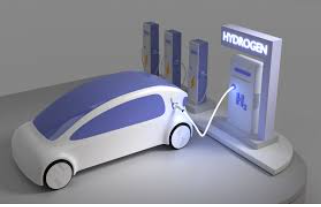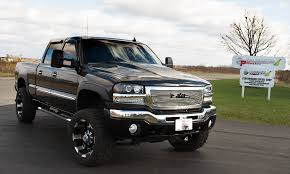High Power LED Applications: From Automotive to Industrial Lighting Solutions

A High power LED is transforming the way we approach lighting, offering brighter, more efficient, and longer-lasting solutions across various applications. From automotive headlights to industrial lighting systems, these LEDs provide superior performance while reducing energy consumption and maintenance costs. In this article, we’ll explore the diverse uses of high power LEDs and why they’ve become a go-to choice for modern lighting needs.
What Are High Power LEDs?
A high power LED is a light-emitting diode designed to handle higher electrical power (0.5 W or more) in a compact package, producing much brighter light than standard LEDs.
Key Features
- High brightness: Can deliver 1–several watts of optical power for strong illumination.
- Energy efficient: Provides high lumens per watt (lm/W), giving more light with less energy.
- Excellent heat control: Uses metal or ceramic bases to manage heat and ensure long life.
- Durable design: Often automotive-grade (AEC-Q102 qualified), with compact and flexible package types.
Why It Matters
High-power LEDs are valuable because they deliver bright light in compact spaces, use less energy, can be designed in flexible ways, and last a long time when their heat is properly managed.
Automotive Applications
LED technology is widely used in modern vehicles for efficiency, safety, and design. Key applications include:
Key Applications
- Daytime Running Lights (DRLs)
DRLs improve vehicle visibility during daylight hours, helping pedestrians and other drivers spot the car more easily. Modern DRLs use high-brightness white LEDs that provide instant illumination and excellent energy efficiency. Automakers also use DRLs as styling elements, incorporating distinctive patterns or shapes that strengthen brand recognition.
- Interior Ambient Lighting
RGB LED modules inside the cabin let drivers and passengers personalize lighting colors and brightness to suit their mood or driving conditions. Cool tones promote calmness during night drives, while warm tones add comfort and luxury. Advanced systems can even sync with music or driving modes, creating a fully immersive in-car atmosphere.
- EV Badge and Charging Port Lighting
In EVs, LED illumination around the brand logo or charging port serves both practical and decorative purposes. It enhances visibility during nighttime charging while showcasing the manufacturer’s design identity through color-shifting or animated lighting effects. Some models display specific colors or patterns to indicate charging status or readiness.
Example Application: Brightek’s ICLED EVO 3838
Brightek’s ICLED EVO 3838 represents the next generation of automotive LED innovation. Provides bright, uniform light (up to 7000 mcd) in a compact size, ideal for EV badge and accent lighting. Its efficient, colorful, and compact design lets automakers create unique lighting while using minimal power.
Industrial and Commercial Lighting
High-power LEDs are essential in industrial settings like factories and production lines, where visibility, durability, and reliability are crucial. They provide bright, consistent light and can withstand tough conditions such as vibration, dust, and high temperatures. Their energy efficiency and long lifespan make them ideal for continuous, 24/7 use.
Key Applications:
- Factory Sensors and Machine Vision Systems:
High-brightness LEDs provide the illumination needed for accurate optical sensing, pattern recognition, and quality inspection. They help cameras and sensors detect small details quickly and precisely, improving production accuracy.
- Signal Indicators and Alarms:
LEDs offer clear, high-contrast visibility, ensuring workers can easily identify machine statuses or warnings even in dim, dusty, or smoky environments. Their quick response time enhances operational safety.
- Status Lighting for Control Panels:
Compact LED modules fit seamlessly into control panels and equipment interfaces, providing reliable visual feedback with minimal power use and maintenance.
High-power LEDs improve safety, efficiency, and reliability in industrial lighting.
See also: Ultimate Guide to Different Dart Games and How to Play Them
Consumer and Specialized Devices
High-power LEDs are commonly used in personal electronics and custom lighting because they are small, durable, and deliver vivid colors. They add both function and style to modern connected devices.
Key Applications
1. Wearable Flash Modules
High-lumen RGB LEDs are used in wearables, cameras, and portable flashlights to deliver bright, reliable illumination for photography and outdoor use. Their small size and energy efficiency make them ideal for compact, battery-powered devices.
2. Gaming PC Accessories
Addressable RGB LEDs (ARGB) create dynamic lighting effects in keyboards, mice, cooling fans, and PC cases. They allow users to customize colors, patterns, and animations, enhancing the immersive gaming experience and personalization.
3. IoT Devices and Smart Home Systems
High-brightness LEDs with a small footprint are often integrated into smart bulbs, light strips, and other IoT-enabled devices. Many use integrated control ICs for network-based control, enabling color changes, dimming, and synchronization across connected home systems.
LEDs with built-in control chips simplify programming, synchronization, and power management. This makes them ideal for smart lighting ecosystems, where performance, design flexibility, and seamless connectivity are essential.
Advantages of High Power LEDs
High-power LEDs offer several benefits that make them ideal for automotive, industrial, and consumer applications:
- High Brightness
They produce strong, focused light, making them suitable for applications requiring high visibility, projection, or illumination.
- Energy Efficiency
High luminous efficacy (lumens per watt) means they provide more light with less energy, saving power and reducing operating costs.
- Effective Thermal Management
Advanced designs with heat-resistant materials and proper heat sinks allow reliable performance even under high current or continuous operation.
- Compact and Flexible Design
Available in different sizes and top or side-emitting types, these LEDs fit into tight spaces or custom designs without reducing brightness.
- Reliable for Demanding Conditions
High-power LEDs are built to work reliably even in harsh conditions. This ensures they last longer and perform safely in critical applications.
High-power LEDs give bright, energy-saving, and dependable light in a small size, making them useful for many different purposes.
How to Choose the Right High-Power LEDs for Your Design
When using high-power LEDs, choose ones that fit your design, available space, and performance needs.
- Module Design and PCB Space
Every lighting module has a unique structure. Choose an LED package size that fits well with your PCB layout and available space. This ensures proper heat dissipation and prevents optical or mechanical interference.
- Certifications
Certifications ensure that LEDs meet quality, safety, and regulatory standards for their intended market. They verify that the product is reliable, safe to use, and compliant with industry requirements.
- LED Emitting Direction
Choose the right light direction for your design:
- Top-emitting LEDs: Light comes straight out of the top, ideal for general illumination and focused lighting.
- Side-emitting LEDs: These LEDs direct light to the side, making them perfect for tight spaces, light strips, or backlighting.
- Electrical Power (Wattage)
Select an LED with the right power level for your brightness needs. Using the correct wattage ensures stable performance, consistent light output, and prevents overheating or power waste.
- Luminous Efficacy
Measured in lumens per watt (lm/W), this value shows how efficiently the LED converts power into light. Typical ranges are 12–150 lm/W. A higher number means brighter light with lower energy use and less heat buildup.
Choose high-power LEDs that balance brightness, efficiency, and size. The right LED delivers bright, efficient, long-lasting light that meets industry standards.




